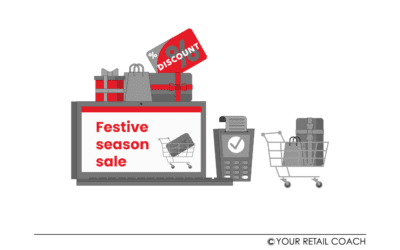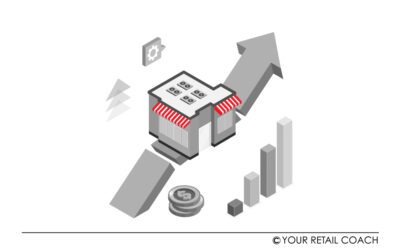Market Research Report
Anyone with plans of starting an online venture should be equipped with a business plan and within it – market research for online business is a critical component determining the viability of the product or service. This exercise is carried out through with various technical research tools. Market research companies helps startups discover its target market based on interest, opinion and demand about the product from its potential customers.
Apart from this, it gives insights about competitors and their market approach. This makes market research an exercise that cannot be ignored because of the value and insights it offers to online entrepreneurs before investing their time and money into the idea. This write-up seeks to interest readers on how market research companies like YRC conduct research, and if you wish to know “how to do market research for a start-up ?” and what are the types of market research activities, then this is a must-read. The idea is to enlist pointers that will be essential to the creation of an effective document showcasing market study for new business. Let’s explore each one of them one at a time:
I. Market SWOT:
As you would know by now that SWOT is an acronym for – strengths, weakness, opportunities and threats. It is a combination of internal and external factors that get taken into account in making a judgement about the viability of a business idea. The scope of SWOT analysis can extend to an entire organization, industry or an individual department. However, here we would restrict ourselves to studying the feasibility of the business idea under consideration. Going further into SWOT, we have to understand that the strengths and weaknesses are considered internal, while opportunities and threats are treated as external factors.
By doing SWOT a company acquires awareness about emerging concerns and it also equips the company with a healthy perspective on things which are going well. You may wonder about the long term utility of an exercise like SWOT. SWOT document can be a handy reference document that provides the company with a bird’s eye view about the company and its position in the market. This makes even more sense to an e-commerce brand where there is a pitched level of competition among the existing players.
II. Competitor Analysis:
By the name itself, you would get an inkling that it is a strategy wherein you identify the major competitors and do the necessary research about their sales, products and marketing strategies. This would give you a better perspective on where you stand, and where the opportunities for improvement exist in your business. By doing competitor analysis purposefully and following through will equip your e-commerce venture with a necessary competitive advantage in the market, which can be instrumental in giving a head start to a new business.
Overall competitor analysis can be an exhaustive document but it majorly covers the following points namely – potential gaps in the market, the scope for new products or services, reveals market trends and develops effective selling strategies. Learning about these parameters can improve your chances of success substantially. Besides this, there are enough competitor marketing analysis tools available that can make the entire process easier.
III. Sales Channel Analysis
This pertains to the evaluation of various potential channels for customer acquisition. The crux here is to identify the best sales channels where business has to focus for lead generation activities. Today, for any online business there could be a multitude of sales channels to attract prospects and paying attention to each one of them individually will pay dividends in the long run.
IV. Pricing Analysis
Price Analysis is the process of examining and evaluating a proposed price (sweet spot) and how it is going to affect the overall business. From a business point of view, it encompasses activities like analysing the feasibility of specific price points and optimizing pricing strategy for maximizing revenue.
By undertaking pricing analysis in the initial stage of the business makes it seamlessly integrate into the overall strategy before it becomes a daunting undertaking when the company has grown in size substantially. It is seen that companies that carry a range of products at different price points, cater to different customer tiers or carry complex product bundles cannot evaluate their potential profitability without pricing analysis for every SKU.
V. Demand Analysis
This refers to the process of analysing customer demand for a product in a target market. It allows companies to understand whether they can successfully launch a product or service and expect to generate profits. This exercise also enables companies to understand high demand markets and the viability of their investments in each of these markets. Demand analysis is likely to involve the following steps including – market identification, product-line demand, dominating brands in the market and potential investment required to get visibility online to cater the demand.
VI. Location/ Region Analysis
Unlike physical stores, the location of an e-commerce store really does not matter, as its virtual. But the location of the customer does make a difference. An e-commerce store must be attuned to locations where there is a demand for products being sold. Such insights can be drawn by doing location analysis which would equip a brand with the necessary information on inherent demand existing in a location and also can help you to gauge the level of competition from existing online players which can be a critical parameter for success.
VII. Market Prioritization
This refers to the practice of concentrating and expanding into markets that have the potential demand and our target customers. This is done with a view of utilizing the market budget in the most optimum fashion. Here the budget gets distributed to markets in descending order, with the most prominent market getting the lion’s share of the budget. Overall, market prioritization allows a brand to get its priorities right by focussing on markets with the most potential demand for their products/ services.
VIII. Market Overview
This exercise is fundamental to market research for understanding retail consumer and has much to do with vital demographics (age, gender, location etc) associated with the target audience. Based on which an estimation of market size for the product and services is carried out. It allows a brand to forecast the potential of the market before the actual roll out services from an ecommerce store.
IX. Go-to-Market Strategy/ Marketing Strategy
Based on the insights and data mining, ecommerce market research experts from YRC will be able to devise a framework for going ahead with the digital marketing strategy. This can be a combination of online marketing strategies that will help the brand with targeted audience outreach, who would be most benefited by the products and services of the ecommerce store. This can involve Paid Social Advertising, Search Engine Optimization (SEO), Social Media Marketing (SMM), Search Engine Marketing (SEM) and so on. All these strategies will allow a brand to acquire online visibility allowing it to reach potential customers in a wide geography. The scope of marketing research would be to offer advice on utilizing the marketing budget for digital marketing in the most optimum manner and the roadmap of digital marketing activities/ campaigns.
X. Recommendations
Based on market research reports, our market research analyst would be preparing a detailed research paper that would have exclusive recommendations for the business. Recommendation in the market research report will equip the online business with a foolproof launch plan and short-term growth led strategy for the business to thrive and prosper through every business cycle.
YRC is amongst leading market research companies in Pune, India or business research companies, as we have the necessary resources and essential market research tools to carry out the research exercise with effectiveness. Our business speciality includes market research for online business.
The recommendations in the research paper would be backed by a call-to-action document which would include practical and implementable steps with associated guidelines to be followed. Ultimately, the market research exercise will allow the business with a better perspective on the market and by closely following and implementing the proposed recommendations the online store is most likely to have an unmatched competitive edge in the market.
Get Advice for Market Research Report
Related Blogs
Making the most out of the festive season shopping: A Customer Perspective for Retailers
Decoding the Festive Shopping Spree For us, as customers, the festive season is a licence to spend. The vibes of festivity ushers with joy and a sense of celebration. This elevated mood often turns into an enhanced willingness to spend and indulge in shopping. It is a...
Mitigating Business Risks in Retail
Spotting the Swirls Sailing the stream of retail is canopying between opportunities on the surface and risks as the current of that stream. If the bad swirls are not spotted in advance, it can turn things undesirable. While big brands grapple with issues like lapses...
How Retailers are Enhancing Customer Experience (CX) with Hyper-Localisation
Hyper-localisation is an alignment strategy that helps retail brands and businesses mould into the requirements of a locality-based market environment. Marketing-wise, it helps retailers tailor their value propositions to cover the needs and expectations of highly...





We work only for Visionaries.